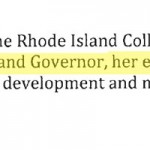Seattle Minimum Wage and Restaurant Jobs
Yesterday, I initiated a conversation with Jared Moffat on Facebook when he shared a post by local progressive activist and writer Steve Ahlquist, who linked to an article on Forbes.com by Erik Sherman scoffing at conservatives who proclaimed the drop in food service employees in the Seattle area from January to May of last year following a big jump in the city’s minimum wage:
Yes, the loss of 1,000 jobs between April and May, after the implementation of the $11 an hour minimum wage, was large. There was a 900 position drop between August and September, which only shows that few trends work in absolute straight lines. But the gain of 1,100 jobs between May and June, at the same $11 an hour minimum wage, was larger. And that was equaled by the 1,100 position jump between September and October.
Noting one of the commonly cited studies on minimum wage (this one, I think), I suggested that an increase in the minimum wage might increase minimum-wage jobs among stores that disproportionately cater to minimum-wage-earning customers. Nobody claims that minimum wages wipe out low-end jobs, and employees who keep their jobs have more disposable income, so the businesses they frequent should see an increase.
That one big beneficiary might be fast-food restaurants is not an encouraging sign when it comes to improving the lives of the workers or the local economy. The money has to come from somewhere, and one would expect that taking money from elsewhere in the economy to supply it to dining establishments wouldn’t help pave the way for advancement.
Be that as it may, this morning, I came across a post at ZeroHedge that incidentally posts a chart which proves the Seattle results were merely have been part of a national trend. Here’s the data from the St. Louis Fed that Sherman cited. It shows an increase in “food services and drinking places” jobs of 2.18% from May 2015 to November 2015. Looking at the same data nationally, though, shows that the decrease in the spring smaller and shorter in duration than in Seattle, and the increase thereafter was almost as large, at 1.83%.
As a consequence, from November 2014 to November 2015, Seattle-area jobs in this sector increased 1.87%, while nationally, such jobs increased 3.45%. This could suggest two similar dynamics: Seattle-area employers in the industry laid off too many people because of the minimum wage increase, not taking into account industry-wide growth trends, and after the initial layoffs, the disposable income adjustment kicked in, although not as strongly as the original Seattle-area chart would suggest. All in all, that doesn’t look like an encouraging development.
(The annual increase in this industry in Rhode Island, incidentally, was 5.35%.)


